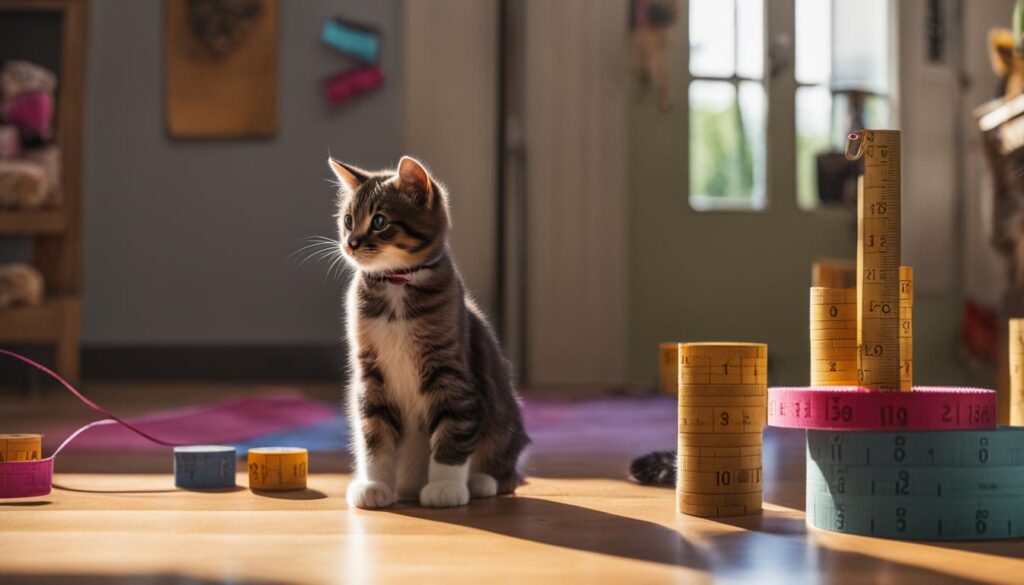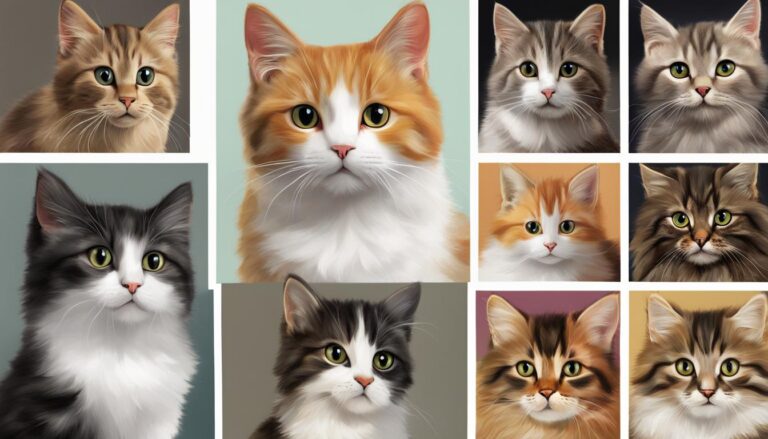Do you ever wonder when your furry feline friend will stop growing? Understanding the growth stages and timeline of cats can provide valuable insights into their development. Whether you’re a new cat owner or simply curious about your pet’s growth journey, we’ve got you covered with key facts and details about when cats stop growing and what factors can influence their growth rate.
Principales conclusiones:
- Cats generally stop growing at around one year old, but they aren’t considered fully grown until they reach 18 months.
- Factors such as breed, gender, diety overall health can affect a cat’s growth rate and size.
- Male cats are typically bigger than females, and unneutered males may develop bigger cheeks due to testosterone.
- Maine Coon cats and some other breeds may continue growing until they reach two years old.
- Genetic factors, diet, environmenty overall health also play a role in a cat’s growth.
Factors Affecting Cat Growth
When it comes to the growth of cats, several factors come into play. Understanding these factors can help you better understand your cat’s development and ensure their overall well-being. Let’s look at some of the key factors that can affect a cat’s growth.
Gender
Gender plays a role in determining the size and growth rate of cats. Male cats tend to be larger than females, so you can expect your male cat to be bigger as it grows. This is due to differences in hormones and genetics between male and female cats.
Spaying and Castrating
The decision to spay or neuter your cat can also impact its growth. Spaying or castrating a cat can affect its adult body shape and size. It is important to note that the timing of the procedure can also have an impact. Cats that are spayed or neutered early may not grow as large as those that are neutered later in life.
Breed, Genetics, Diet, Environment, and Overall Health
Aside from gender and spaying/neutering, other factors that can influence a cat’s growth include its breed, genetics, diet, environmenty overall health. Different cat breeds have different growth patterns, with some breeds continuing to grow until they reach two years of age. Genetics and diet also play a significant role in determining a cat’s growth rate. A healthy diet and a supportive environment, along with regular veterinary check-ups, can help ensure optimal growth and development for your furry friend.
| Factors | Impact on Cat Growth |
|---|---|
| Gender | Male cats tend to be larger than females. |
| Spaying and Castrating | The timing of the procedure can affect adult body shape and size. |
| Breed | Different breeds have different growth patterns. |
| Genetics | Genetic factors contribute to a cat’s growth rate. |
| Diet | A balanced diet is essential for healthy growth. |
| Environment | A supportive environment promotes optimal growth. |
| Overall Health | Regular veterinary check-ups ensure healthy development. |
By considering these factors and providing the necessary care, you can support your cat’s growth journey and help them reach their full size and potential.
| Growth Stage | Age Range | Main Characteristics |
|---|---|---|
| Neonatal Stage | 0 – 2 weeks | Complete dependence on mother, closed eyes, and ears |
| Transitional Stage | 2 – 4 weeks | Opening of eyes and ears, development of baby teeth |
| Socialization Stage | 4 – 7 weeks | Increased interaction with littermates and humans, learning social skills |
| Juvenile Stage | 7 – 14 weeks | Rapid growth, improved coordination, and exploration |
| Adolescent Stage | 3 – 6 months | Continued growth, teething, and development of adult behaviors |
Understanding these different growth stages allows cat owners to provide the appropriate care and support for their kittens’ development. It is essential to provide a nurturing and safe environment, along with a balanced diet and regular veterinary check-ups, to ensure that kittens grow into healthy and happy adult cats.
When Do Cats Reach Full Size?
Cats generally stop growing once they become one year old, but they aren’t considered fully grown until they reach 18 months. The closure of growth plates in the bones indicates that a cat has reached maturity. Different cat breeds have varying growth patterns, with some reaching their full size earlier than others.
Observing age milestones, monitoring weight, assessing body proportions, and considering breed standards can help determine if a cat has stopped growing. For most cats, reaching their full size is a gradual process that takes time. It’s important to give them the necessary time and resources to develop at their own pace.
Understanding breed standards is crucial when assessing a cat’s growth. Each breed has specific guidelines for ideal size and proportions. For example, the Maine Coon breed may continue growing until they reach two years old. By comparing a cat’s size and proportions to the breed standard, you can get a better idea of whether they have reached their full size.
| Breed | Reaching Full Size | Additional Notes |
|---|---|---|
| Maine Coon | 2 years | One of the largest domestic cat breeds |
| Siamese | 12-18 months | Sleek and slender breed |
| Persian | 18 months | Long-haired breed with a distinctive round face |
It’s important to note that individual cat growth can vary even within the same breed. Factors such as genetics, diet, environment, and overall health can influence a cat’s growth rate. Regular veterinary check-ups and consultations with breeders or experts can provide valuable insights into your cat’s growth journey.

Remember, every cat is unique, and their growth should be monitored with care. By providing a balanced diet, ample exercise, and a loving environment, you can support your cat in reaching their full size and leading a happy, healthy life.
Conclusión
Understanding the growth patterns and stages of cats is essential for their overall well-being. Throughout their growth journey, kittens undergo rapid development, gaining around one pound of weight each month in their first six months. Although cats generally stop growing at one year old, they aren’t considered fully grown until they reach 18 months, when their growth plates in the bones close, indicating maturity.
Various factors can influence a cat’s growth rate, including gender, breed, genetics, diet, and overall health. Male cats tend to be larger than females, and spaying or neutering can impact their adult body shape and size. Breeds such as Maine Coon cats may continue growing until they reach two years. It’s important to note that each cat is unique, and their growth can be affected by their environment, diet, and overall health.
To monitor a cat’s growth and ensure they are a healthy weight, regular veterinary check-ups are crucial. By observing age milestones, monitoring weight, assessing body proportions, and considering breed standards, you can determine if a cat has stopped growing. Providing a balanced diet, ample exercise, and a loving environment are key factors in helping cats reach their full size and lead happy, healthy lives.
So, whether you’re a proud owner of a kitten or a cat nearing maturity, understanding their growth journey will enable you to provide the best care and support. By giving them the right environment, nutrition, and veterinary attention, you can ensure they grow into full-grown cats and enjoy a vibrant life by your side.




